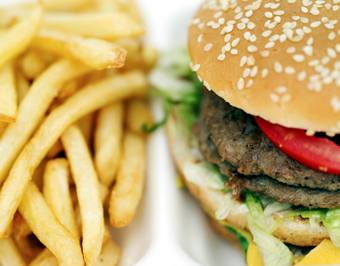
Meat & Carbs Are Back in Schools
By Thursday Review staff | January 5, 2014 |
Is there a young person in your family—child, preteen or teen—thinking about becoming a vegan or vegetarian? Or do you have a kid in school who is trying to lose weight?
Well, it may soon become a bit more difficult now that the U.S. Department of Agriculture has announced new, relaxed standards and quotas on the amount of red meat, bread products and high carbs items served in school cafeterias across the country.
The USDA had originally introduced the lower-meat, lower-carb guidelines in an effort to show progress on combating childhood obesity, now seen as a major problem in the U.S. The government says it is now relaxing those standards to allow school systems greater flexibility in planning meals and to for greater savings. School systems in some states and counties had complained that the less-meat, less-carbs rule—though intended to make school lunches healthier and more nutritious for students—were driving up the costs of meal preparation and budgeting. For some school systems, the USDA’s guidelines were putting additional strain on schools already strapped for adequate funding.
Others saw the relaxation of the stricter guidelines as inevitable. The reduced-meat, reduced grains diet had produced little overall effect on students’ weight in those states and school systems where initial data was available, indicating that many students may be maintaining the “bad” behavior of their diet before and after school hours.
The USDA’s website says that the original recommendations and guidelines, established in 2010-11 by President Obama after a major political push by First Lady Michelle Obama, “align school meals with the latest nutrition science and the real world circumstances of America’s schools.”
The idea was to offer a vastly improved diet for students, including additional fresh fruits and vegetables, eliminating 2% milk in favor of fat-free or low-fat milk, greatly reducing carb and trans fat intakes by discouraging fries, chips and salty snacks, and replacing some types of bread and rolls with only whole-grain products.
But the USDA stresses that the inclusion of more meats and carb products is still subject to guidelines regarding the quality of the “lean” meats, and that the increased carbs should be limited to whole-grain type breads and foods. That means do not expect double-cheeseburgers or sausage and pepperoni pizza back on the menu—at least not in large quantities.
